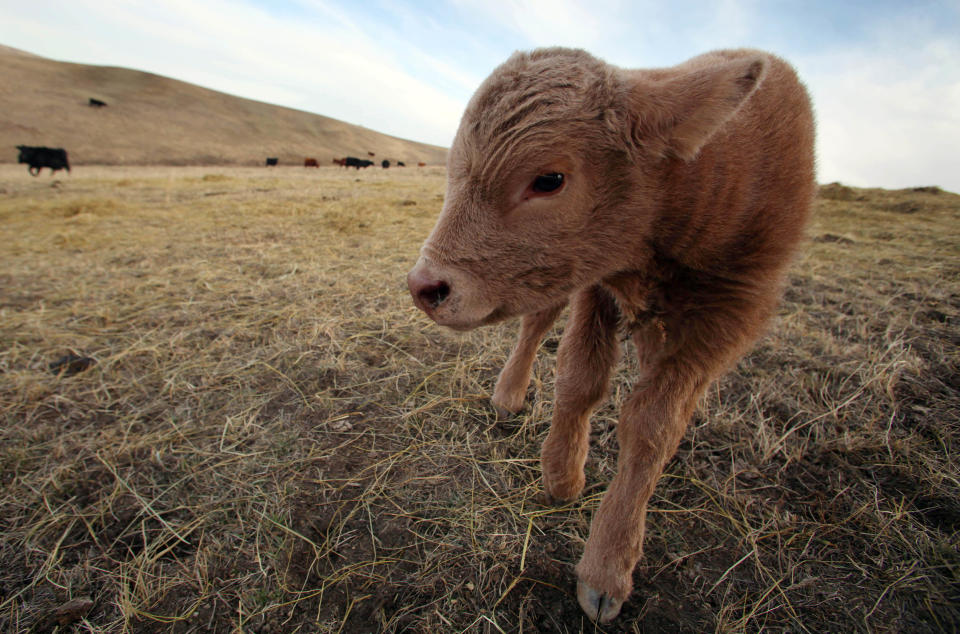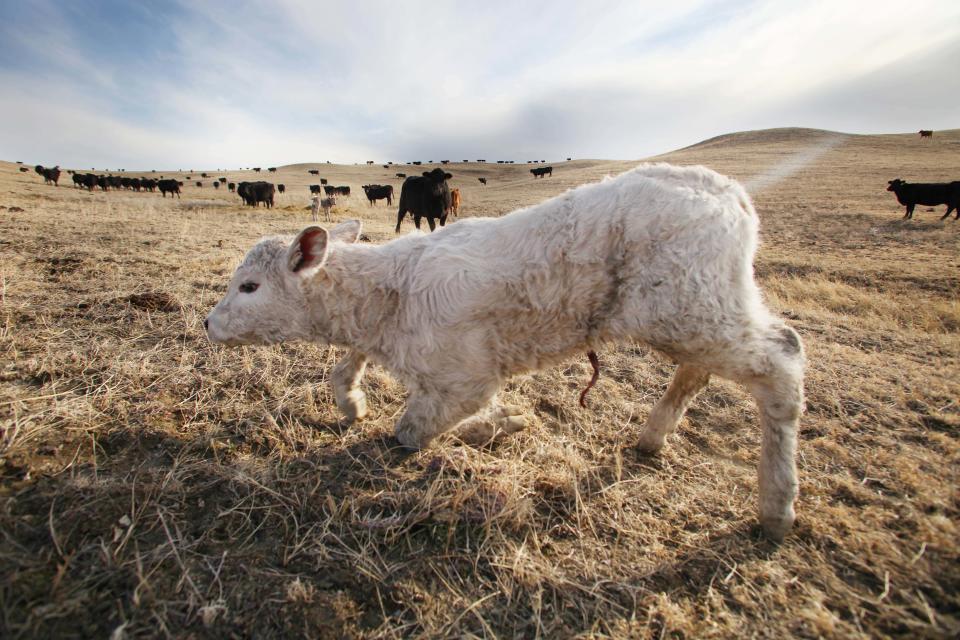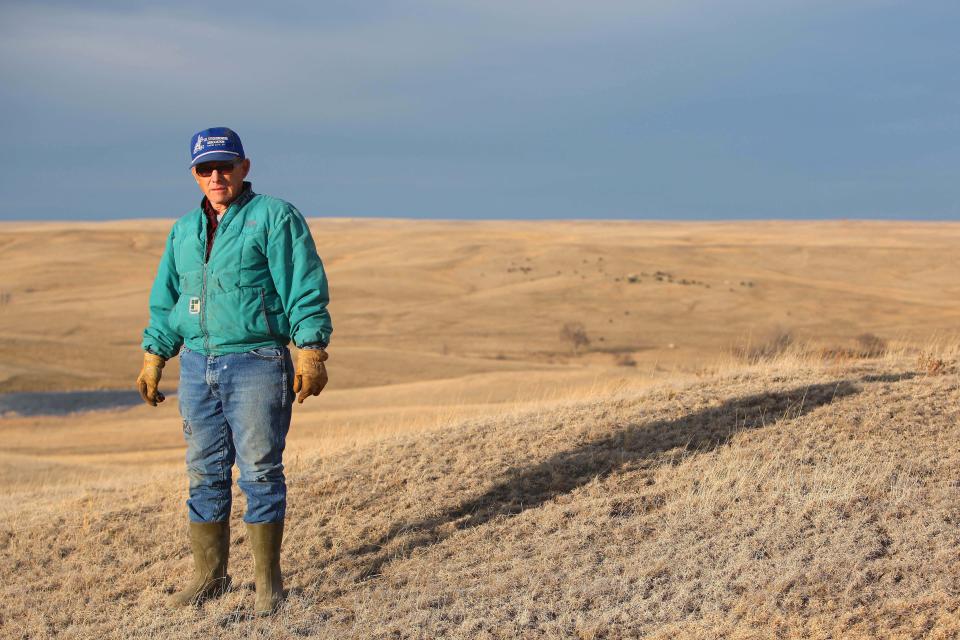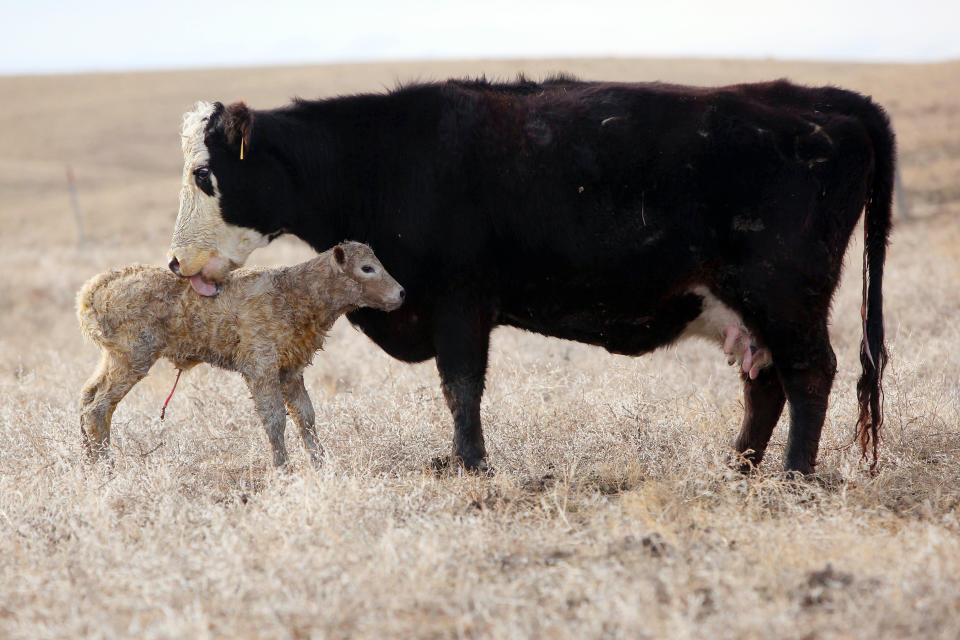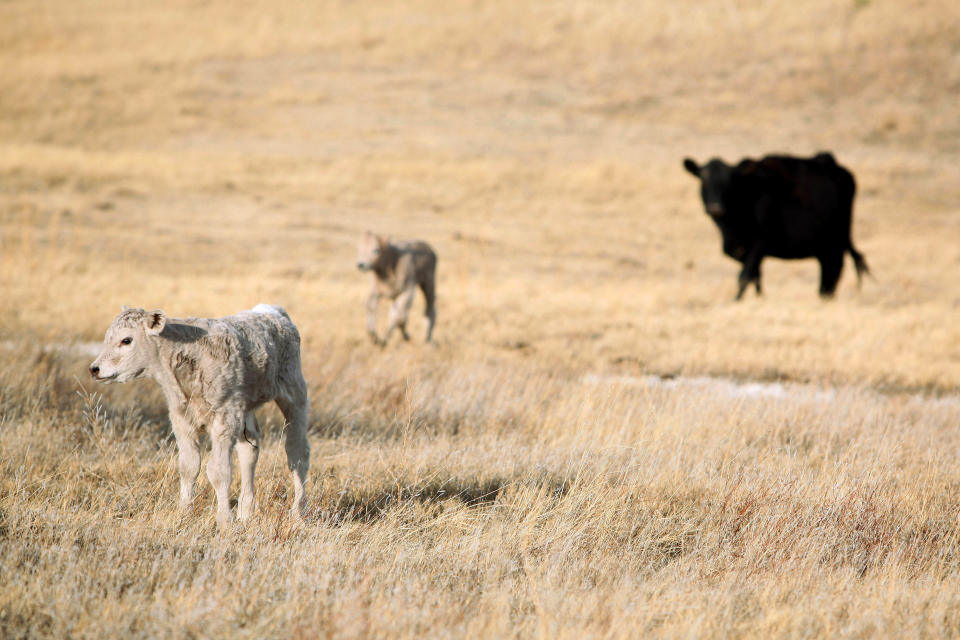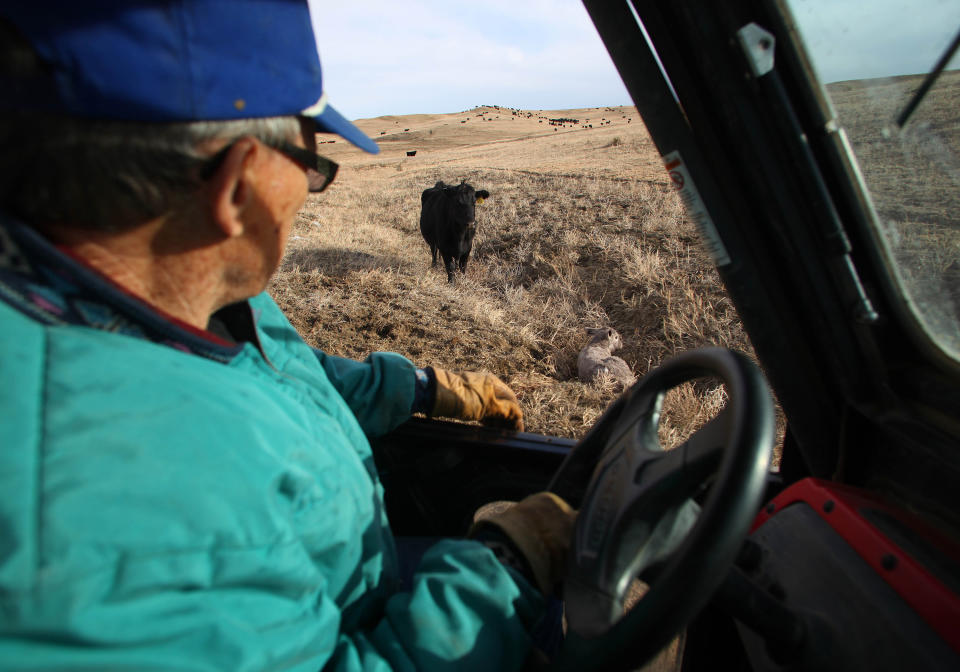Calving season brings hope to western SD ranchers
SIOUX FALLS, S.D. (AP) — Cattle ranchers discovered tens of thousands of dead animals in their fields last fall after an unexpected blizzard slammed western North and South Dakota, a devastating loss for their livelihood, but they're finding renewed hope as spring calving season contributes to their herds' recovery.
The intense two-day October storm, which first brought rain and then dumped up to 4 feet of snow in some places, killed calves that were due to be sold and cows that would have birthed this year's calves.
Chuck O'Connor of Philip, who lost 45 of his 600 cows and 50 of his 600 calves in the blizzard, said his surviving black cows and Charolais calves are healthy and he's not diverging from his standard calving practices. He brought in about 200 replacement females to rebuild and expand his herd.
"There's nothing you can do differently," the 77-year-old rancher said. "Just because I had a loss doesn't mean I'm going to quit."
Cattle experts say recovery could take years for ranchers who lost high percentages of their herds. In South Dakota, more than 40,000 cattle, sheep and horses caught in the rain, snow and high winds died of congestive heart failure brought on by stress. North Dakota's losses are believed to be more than 1,000 animals.
The storm ushered in a frigid winter, but things warmed up for O'Connor in early March with the birth of his first calf. The ranch has since welcomed about 75 new members of the herd, and O'Connor estimates that he'll have reached 500 newborns by early May when his calving season ends.
Julie Walker, an SDSU Extension beef specialist, said the storm recovery will be the toughest on ranchers who suffered the most, especially those who lost 80 to 90 percent of their herds. Bringing in a replacement heifer could run $2,000 and there typically aren't enough females available on the open market to purchase because of the nation's low cattle numbers, she said.
"When you're talking that kind of devastation with only 10 percent of your cows left, even keeping all your replacements, you're not going to rebuild at a rate fast enough," said Walker, an associate professor in animal science at South Dakota State University. "Then it becomes a financial issue. Can you go buy from outside?"
More than 600 ranchers have applied for help from a relief fund set up by the South Dakota Stockgrowers Association, the South Dakota Cattlemen's Association and the South Dakota Sheep Growers Association. The fund has received more than $5 million in donations from around the country.
Also, the U.S. Department of Agriculture will start accepting applications next month for a livestock disaster program that was reauthorized the five-year farm bill. Ranchers will be able to sign up if they incurred losses from 2012 through 2014.
O'Connor says prompt government assistance is crucial for younger ranchers who are working hard to become the future of the industry.
"I had some losses but I'm old enough to take it," he said.
Once the snow melted and the carcasses were hauled off in October, ranchers made sure their survivors didn't have signs of lingering stress.
Larry Stomprud, who runs an Angus cattle ranch near Mud Butte, said he lost 50 of his 300 mother cows in the storm but the survivors are in good condition.
"They acted kind of dumpy for a while," Stomprud said of the 10 or so days after the storm. "It had taken its toll, but I don't think we experienced any more sickness this year after the storm than usual."
Stomprud said he's still catching up from a management and labor standpoint and expects to be about 50 head short come fall sale time.
"Our intention is to grow our herd back to where it was with our own replacements," he said. "We figure we'll probably be back there in two years."
Dr. Vicki Cook, a Rapid City veterinarian who assists ranchers during calving season, said she's seeing higher than normal instances of prolapsed uteri, which tend to come from stress or improper nutrition.
"Everything could be related back that the storm that set them up not to use the nutrients correctly or drug them down so far that they're not back up," she said.
Cook said a prolapse happens when a cow has a live calf and keeps pushing until the uterus is turned inside out. Cook can push the uterus back in so the cow will rebreed after healing naturally.
"We saw a lot of them two years ago, more than normal, and that was due to a dry, bad summer in western South Dakota," she said.
Stomprud said it's been a tough period for ranchers, but he's been overwhelmed by the calls and donations to the relief funds from friends and other caring people. His son received five animals from Heifers for South Dakota, an effort by the nation's ranchers to donate hundreds of bred cattle and heifer calves to their brethren in South Dakota.
"The storm doesn't come without its blessings," he said. "We have really genuinely found out how generous people are. It kind of renewed our faith in mankind."
___
Associated Press writers Carson Walker and Blake Nicholson in Bismarck, N.D., contributed to this report.
___
Follow Dirk Lammers on Twitter at http://www.twitter.com/ddlammers
